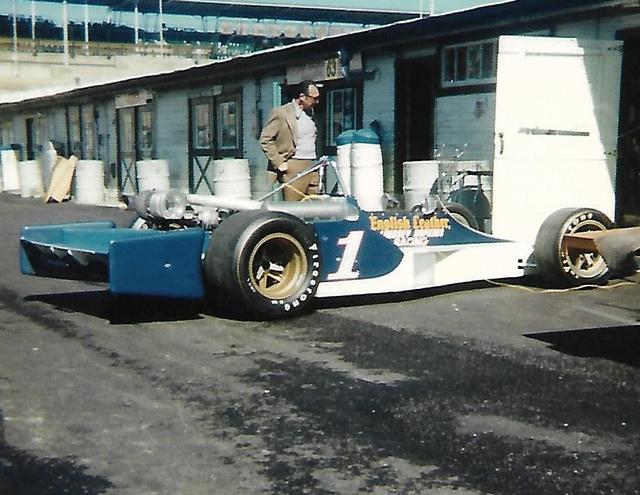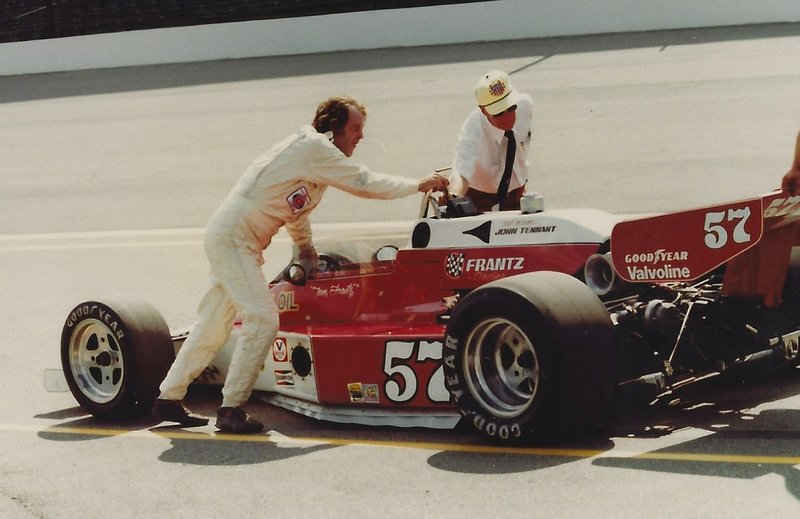Not only did the Coyote IV have skirts, it had an Aeroscreen (well, a precursor):
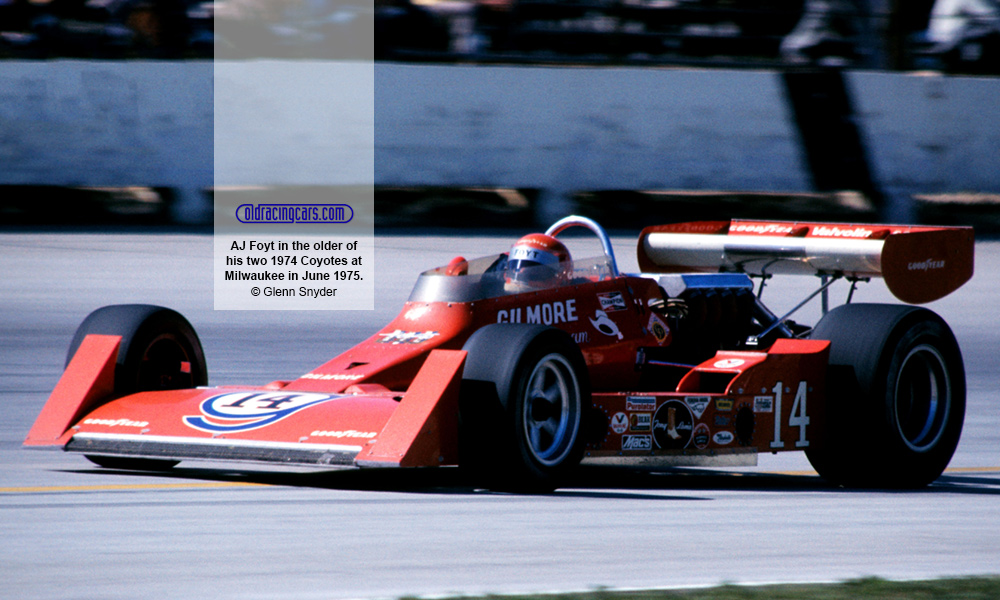
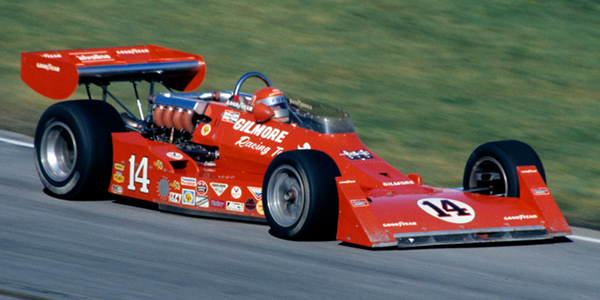
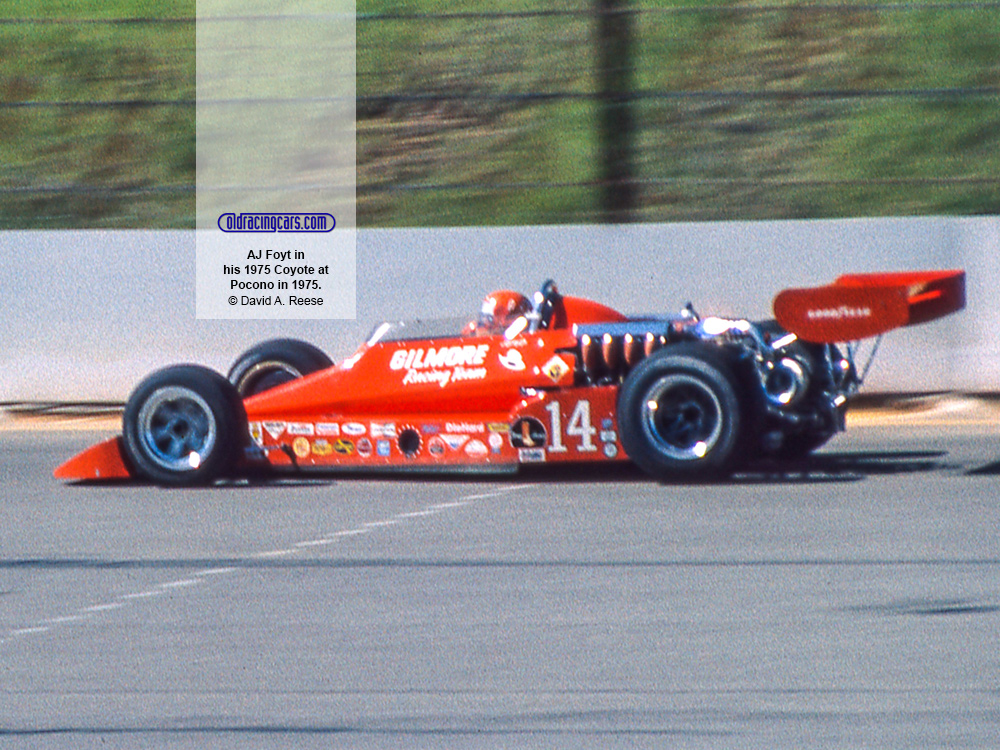
Correct me if I'm wrong but this concept and generation of Coyote's was designed by Bob Riley and I recall he was still with Foyt that year (EDIT when this variation of Coyote was debuted, in 1973 EndEDIT) or had just left.
Anyway, for 1974 he came up with what he believed to be his own Mk II version of this lowline concept car. But with AJ not making Ford/Foyt V8 engines available to anyone but himself that Mk II had to be Offy powered. Which in one way improved the Mk II quite a bit aerodynamically. the reduced frontal area making up to some extend for the loss of hp's.
This Mk II was built under his own name, the Riley, and fielded by entrant Lindsey Hopkins as the English leather Special, driven by Roger McCluskey.
The most interesting version of this car was the initial version, that was envisioned to us no conventional rear wing but had a tail part that was in many ways an extention of the lower part of the chassis, with an wing profile at the underside, almost like what we saw in later years in an even more extreme version being used on a car of which, when I gave info about it, someone else out here made me look being a BLATant liar.
Another difference between the Riley and that later car was that the Riley had side extentions ("fenders") attached to that rear part, remeniscent to the rear part of the first versions of the DW12, in line with the rear wheels, but on the the Riley they were less wide. (or also remeniscent to the '81 and '82 Interscope Batmobiles tail piece pontoons)
But on the Riley these "pontoons" acted as closing the underwing area and reduce air leaking into the underwing. Funny enough, on the picturework I have seen of the Riley, I can't detect anything like the skirts that AJ used like on the pictures above.
EDIT: missed initially that this were 1975 pictures, Sorry!!!"
So if the use of those skirts were an idea of Riley or originates from within the Foyt crew, one tends to believe the latter option.
EndEdit
The concept didn't work, due to teething issues, and the car eventually ran with a conventional rear wing
I don't have pictures of this original version that I can post. And I don't want to deal with breaking copyright issues.
But for people who have acces to a copy, the 1974 Carl Hungenss Yearbook devoted an article to the Riley with some pictures, including of that original rear end on page 79 to 81. Nice read BTW.
Edited by Henri Greuter, 01 January 2022 - 15:04.















